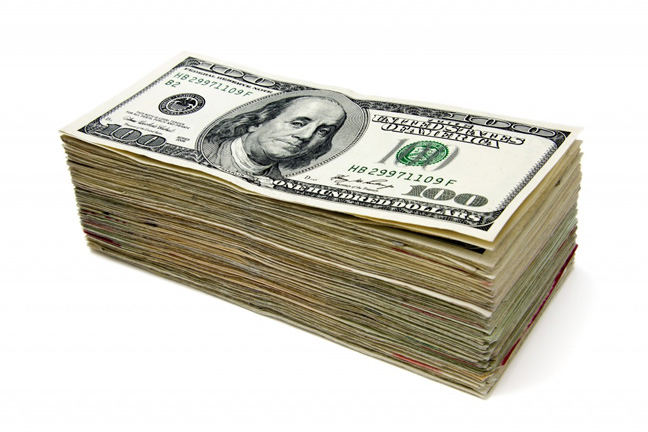
Agricultural News
Agricultural Subsidies Remain a Staple in the Industrial World
Tue, 11 Mar 2014 15:37:48 CDT

In 2012, the most recent year with data, agricultural subsidies totaled an estimated $486 billion in the top 21 food-producing countries in the world. These countries-the members of the Organisation for Economic Co-operation and Development (OECD) and seven other countries (Brazil, China, Indonesia, Kazakhstan, Russia, South Africa, and Ukraine)-are responsible for almost 80 percent of global agricultural value added in the world, writes Grant Potter in the Worldwatch Institute's latest Vital Signs Online trend (www.worldwatch.org).
Agricultural subsidies are not equally distributed around the globe. In fact, Asia spends more than the rest of the world combined. China pays farmers an unparalleled $165 billion. Significant subsidies are also provided by Japan ($65 billion), Indonesia ($28 billion), and South Korea ($20 billion).
Europe also contributes a great deal to agricultural subsidies due in large part to the Common Agricultural Policy (CAP) of the European Union (EU). At over $50 billion, CAP subsidies accounted for roughly 44 percent of the entire budget of the EU in 2011. And this figure does not include EU price supports, in which governments keep domestic crop prices artificially high to give farmers a further incentive at the expense of the consumer. Including these price supports, the EU spent over $106 billion on agricultural subsidies in total.
North America provides almost $45 billion in subsidies, with the United States spending just over $30 billion and Canada and Mexico spending $7.5 billion and $7 billion respectively. Of the countries studied by the OECD, 94 percent of subsidies were spent by Asia, Europe, and North America-leaving only 6 percent for the rest of the world.
The term "subsidies" covers a vast number of different policy options, but at the heart of all of them is government intervention in agricultural markets. A common type of subsidy is called direct payments. These are regularly paid to farmers who produce a designated crop and the payments are decoupled from production-which means that farmers can produce as much or as little as they want and still receive this subsidy. Direct payments are the cornerstone of the EU CAP and account for $40 billion of its $50 billion budget.
Subsidies like direct payments and crop insurance are criticized as not being safety nets for poor farmers, as is their stated purpose, but rather a way for wealthy farmers to get richer. The direct payment policy of the EU CAP, called the Single Farm Payment, is distributed by the hectare-so that farmers who own or rent more land receive greater financial benefits. In the United States, the newly expanded crop insurance program receives similar criticism. The Environmental Working Group estimates that in 2011, more than 10,000 farms received between $100,000 and $1 million each in federal crop insurance subsidies, and 26 farms received more than $1 million. In contrast, the bottom 80 percent of farms (389,494 holdings) individually received only $5,000 on average that year.
Price supports are another category of subsidies. They are intended to keep domestic crop prices high enough to encourage farmers to grow crops even during periods of overproduction, when prices would tend to fall due to oversupply. This can be achieved by imposing a tariff or quota on agricultural imports so that potentially cheaper foreign agricultural products cannot drive down domestic prices.
Price supports can cause overproduction and oversupply because they encourage greater production of a specific commodity and less domestic consumption (since consumers tend to buy less as prices rise). Rather than let the oversupply go to waste, it is traded on the international market at artificially low prices. Since subsidized farmers are insulated from the true cost of farming, they can afford to sell at a lower price than their less-subsidized foreign counterparts. Many developing countries have argued that this undermines their own agricultural sectors as they cannot afford to spend billions in subsidies to overcome this handicap.
Further highlights from the report:
-- OECD countries alone spent $258.6 billion in subsidies to support farming in their respective countries in 2012. OECD subsidies grew rapidly between 2001 and 2004, rising from $216 billion to over $280 billion.
-- Direct payments were a staple of U.S. farm policy from 1996 to 2013, but the $5 billion spent on direct payments was recently struck from the U.S. Farm Bill. In lieu of these payments, the United States expanded the federally subsidized crop insurance program to $9 billion a year.
-- Price supports make up almost 70 percent of China's subsidy spending, and the government particularly encourages the growth of staple crops such as rice and wheat.
-- According to the United Nations Conference on Trade and Development, least-developed countries turned rapidly from being net exporters to being net importers, and between 2002 and 2008 they saw their food imports jump from $9 billion to $24 billion.
WebReadyTM Powered by WireReady® NSI
Top Agricultural News
More Headlines...




















